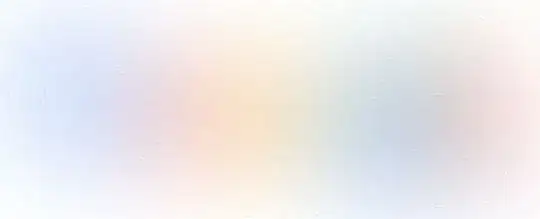Is it possible to "de-blur" the image, if you know the algorithm and
the setting, or by trial & error?
Here, I assume we are only considering images which were blurred using a filter applied to the image, and not as a result of a poor capture (motion/optical blur).
Deblurring definitely is possible, and you will see support in many image processing tools. However, blurring intentionally reduces the amount of information in the image, so to truly get back the original image could require "brute force", whereby a (humungously) large number of candidate images are generated, which all "blur" to the same final image.
Different types of blur have different losses, but it is possible to reverse all of them (albeit expensively). The cost of deblurring and the number of possible outcomes depends on the number of passes taken by the blur filter, and the number of neighbors considered while blurring. Once deblurred, many tools and services should be able to automatically remove many of the outcomes, based on knowing what type of image it is.
For instance, this blog post talks about why blurring content with a low amount of entropy (e.g. check books) is much less secure than blurring something like a human face.
In short, it is indeed possible to get back an image that if "blurred" will result in the same image that you provided. But you cannot guarantee that the deblurred image is the only valid deblurred version (you will need some domain knowledge and image analysis like matching edges, objects making semantic sense).
For the naked eye, it could be difficult to figure out the blurred
content. But could the blurring be "reverse engineered" to reveal the
original image, or at least something that is recognizable?
It is possible that blurring does not fundamentally transform the "signature" of an image, such that the histogram is similar and allows matching.
In your case, the human eye can actually make out that this could have been the Google logo (familiar colors) but the histogram is quite different. Google itself can't identify the image and you can study the histogram and color clusters using this online tool-- the images are quite different.
If probably would be safer if you were to choose to black out the sensitive content (see post here)
I wish these things weren't possible (e.g. I used to try to go as fast as possible near speed traps so that motion blur would hide my number plates, but it never works anymore). Tools to deblur are fairly common now (e.g. Blurity) though they don't work as well with small computer-generated images (less information) as they do with photographs (see sample of what I recovered).

In terms of more references, the first chapter of Deblurring Images: Matrices, Spectra, and Filtering by Per Christian Hansen, James G. Nagy, and Dianne P. O’Leary is a really good introduction. It talks about how noise and other factors make recovery of the exact original image impossible: Unfortunately there is no hope that we can recover the original image exactly! but then goes about describing how you can get a close match.
This survey compares different techniques used in forensic image reconstruction (it's almost 20 years old, so it focuses on fundamentals).
Finally, a link to Schneier's blog where this is discussed to some detail.

